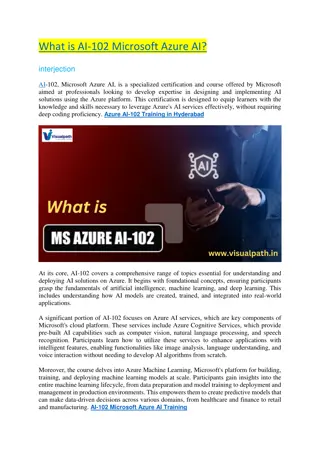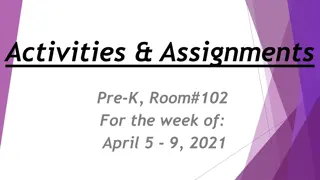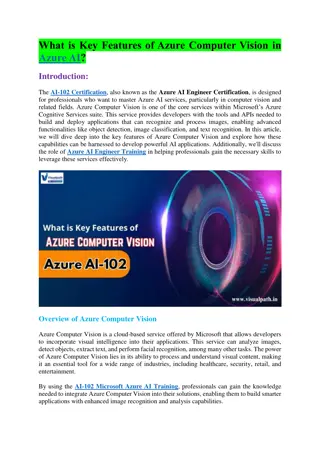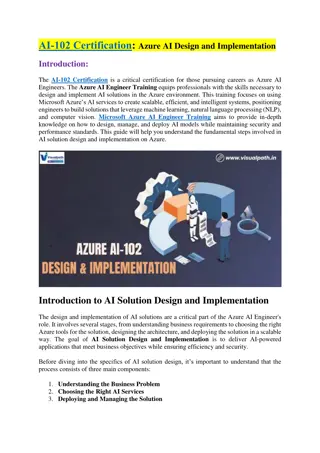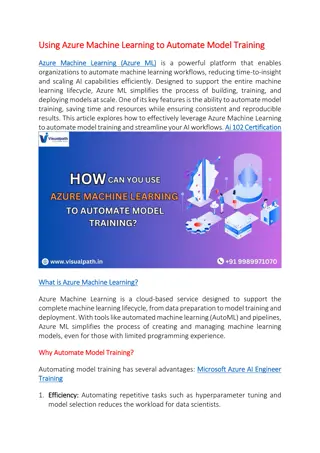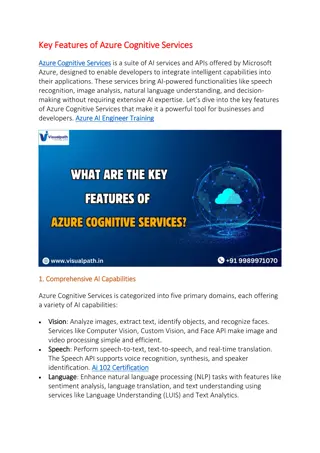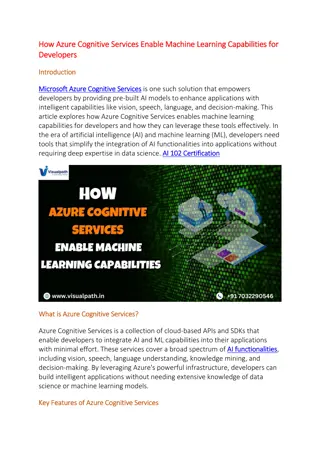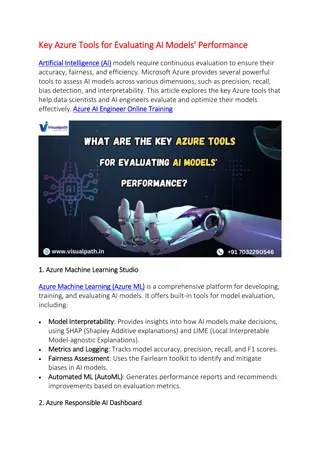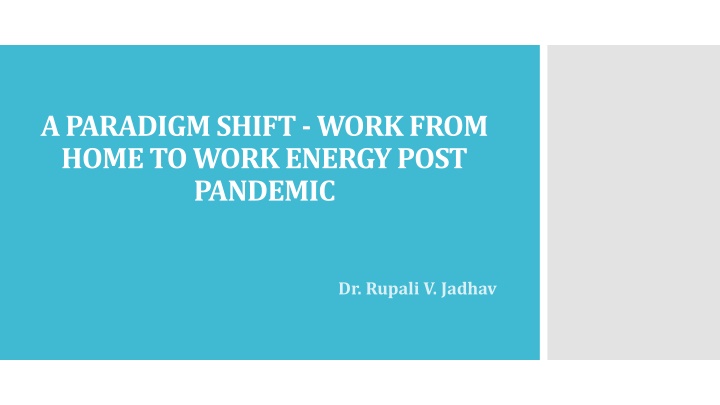
Transitioning to Work Energy Post-Pandemic: Impact and Solutions
Explore the paradigm shift from remote work to returning to the workplace post-pandemic, with a focus on understanding the pros and cons, studying the impact on employees, and providing suggestions to overcome challenges. This research-based study aims to aid management in facilitating a smoother transition and reducing attrition rates while retaining talent.
Download Presentation

Please find below an Image/Link to download the presentation.
The content on the website is provided AS IS for your information and personal use only. It may not be sold, licensed, or shared on other websites without obtaining consent from the author. If you encounter any issues during the download, it is possible that the publisher has removed the file from their server.
You are allowed to download the files provided on this website for personal or commercial use, subject to the condition that they are used lawfully. All files are the property of their respective owners.
The content on the website is provided AS IS for your information and personal use only. It may not be sold, licensed, or shared on other websites without obtaining consent from the author.
E N D
Presentation Transcript
A PARADIGM SHIFT -WORK FROM HOME TO WORK ENERGY POST PANDEMIC Dr. Rupali V. Jadhav
The pandemic has taught us that many job opportunities can be pursued remotely, opening new opportunities for both employers and employees. Post pandemic everything is opened and firms called employees again to the Introduction: workplace. But employees who learned the skills of work from home and maintaining work life balance are not willing to join the system again. India is likely to witness an 86% employee attrition for 2022, estimated by the recruitment agency Michael Page.
1.To understand the pros and cons of work from home. 2.To study the impact of transition from work from home to work life after Objectives: pandemic. 3.To provide suggestions to overcome the challenges.
The study will help to understand the impact of transition from work from home to work life on employees. It will help the management to make this process smoother for employees from work from home to work life. It will help to reduce the attrition level and retain talent in company. organisation and Significance of the study:
The research paper is based on the secondary data. The data has been Research methodology: collected from websites, research papers etc. The data has been exhibited and analysed with help of a pie diagram.
Increase productivity More freedom Improve employees well being Reduce investment Benefits and drawbacks of work from home: Create stress Reduce productivity Lack of a good office environment Issue of security
Sectorwise attrition rate Impact of transition from work from home to work life after pandemic: E-commerce Professional services Financial instituitions Hi-tech/Information technology IT-enabled services Engineering services Chemicals Automotive or vehicle manufacturing Engineering manufacturing Metals and Mining
Different business sectors have the different requirements and accordingly work from home and work from office fit Conclusion: for them. Now it s a great challenge for the Indian firms to reduce the attrition rate and retain the talent in organisations.
1. Since last two years employees were at home and they became habitual of ambience, luxury and a healthy home environment. Thus, management must create a homely environment at work place comfortable and the transition becomes smoother. which makes them Suggestions: 2. Management must develop a mind set of employees that work from office is inevitable in some of the sectors. 3. Management employees related to recreation, compensation, facilities etc. must restructure the policies for




